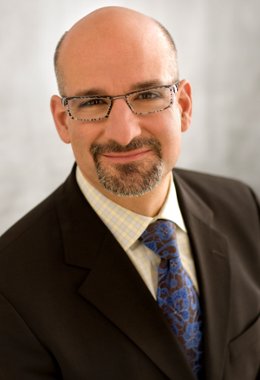Industry News
Opera Center Nearing the Finish Line
 NEW YORK -- When Opera America moved its offices from Washington, D.C. to Manhattan in 2005, part of the plan was to create a kind of nexus for the national opera community in NYC. “We wanted to get more involved in our members’ artistic side,” President Marc Scorca said Tuesday in a brief interview, “to be a catalyst for the creation, rehearsal, and distribution of new work, and to support career development.”
NEW YORK -- When Opera America moved its offices from Washington, D.C. to Manhattan in 2005, part of the plan was to create a kind of nexus for the national opera community in NYC. “We wanted to get more involved in our members’ artistic side,” President Marc Scorca said Tuesday in a brief interview, “to be a catalyst for the creation, rehearsal, and distribution of new work, and to support career development.”
All of which he hopes to accomplish with a new Opera Center, now under construction on two floors of 330 Seventh Avenue on Manhattan’s Lower West Side. The building is a former fur factory.
Slated to open in September, the new, 25,000-square-foot space will house OA’s offices, as well as a fully-equipped rehearsal facility designed specifically for the comfort and safety of singers (and hopefully those who hire them). There are a total of ten vocal studios, most of them with large windows and plenty of natural light; bathroom facilities; a kitchen for catering gatherings in the adjacent board/conference room; a canteen and performers’ lounge; and two large audition halls, one of which is two stories high and can be used as a recital hall, complete with stage, rudimentary lighting, and 89 seats, all of them movable.
Both of the larger rooms are equipped for audio and DVD recording, as is one of the larger studios, as well as webcasting to or from the Center. Scorca envisions, for instance, day-long “feedback” auditions for young artists, bringing in, say, five singers each from San Francisco, Los Angeles, and New York and alerting various managers as to the (password protected) whereabouts of their showcase on the Web.
He sees opera auditions conducted in civilized fashion, with a check-in point, a large reception room with an airport-like sign indicating what organization/individual is in which room, and a warm-up studio next to the actual audition space. As it stands now, most auditions in commercial studios require the young hopefuls to sit on the floor in the hallway and/or warm up in the bathroom – hopefully without competition.
There are plans for a complete score library and listening room, with the recordings converted to digital form, an education suite, several conference rooms, a business center, and green room.
The Center will open only two years after the DiMenna Center for Classical Music, just nine blocks north, which is also a rehearsal and recording space for classical artists. Unlike DiMenna, however, the Opera Center cannot accommodate large ensembles – “we’ll be sending business their way,” said Scorca. “If you want to record or rehearse a 40-piece orchestra, you should go to the DiMenna Center; if you want to conduct a master class for six singers, you should come here.”
He also noted that DiMenna is run by and for the Orchestra of St. Luke’s, whereas the Opera Center has no primary tenant with the rights that go with it. Plus, he points out, in the opera realm, co-productions are increasingly the norm; why not have one central place for planning meetings rather than flying hither and yon.
Members of Opera America will get a deep discount on rent, and there is also a special non-profit rate. Robert F. Mahoney & Associates of Boulder, CO, are overseeing acoustics and Andrew Berman, of Manhattan, is the architect. The total cost of the project is $14 million, divided among design/construction ($6 million); relocating from D.C. ($2 million); and operating endowment ($6 million.)
About $11 million is already present and/or accounted for. With all those hallways and rooms awaiting donor name tags, the remaining $3 million is undoubtedly just around the corner.





 FEATURED JOBS
FEATURED JOBS

 RENT A PHOTO
RENT A PHOTO


